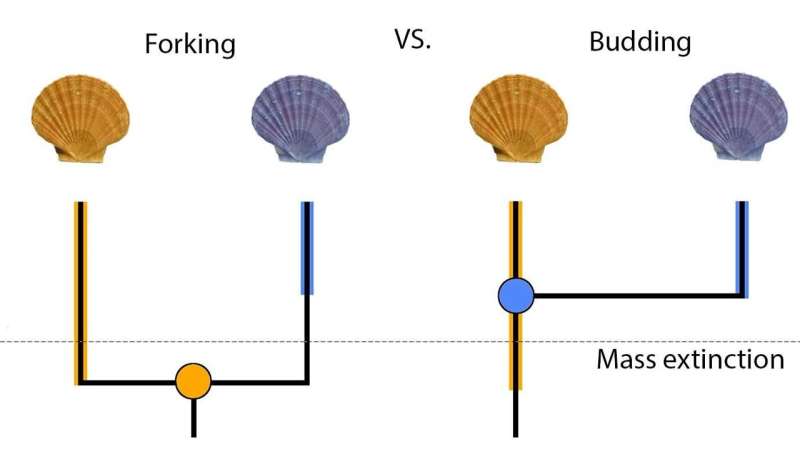Brian Schwartz, CNBC, Dec 3,2021
The influential, libertarian-leaning Koch network has been rocked by an alleged affair scandal, departures of key donors and a workplace discrimination lawsuit.
Americans for Prosperity President Tim Phillips announced his resignation this week. He is said to have had an extramarital affair with a Virginia-based Republican official.
CNBC also has learned that Arlington, Virginia-based Americans for Prosperity recently quietly settled a lawsuit alleging gender discrimination and retaliation in the group's North Carolina branch.

The libertarian political advocacy group Americans for Prosperity, which is backed by billionaire industrialist Charles Koch, has been rocked by an alleged extramarital affair involving a departing leader, as well as an exodus of key donors while the organization undergoes major changes.
CNBC also has learned that Arlington, Virginia-based Americans for Prosperity, which has more than 3 million volunteers spread across 35 states, recently quietly settled a lawsuit alleging gender discrimination and retaliation in the group's North Carolina branch.
In response to this story, the group's spokesman Bill Riggs told CNBC that they found an "amicable resolution" in the lawsuit and defended the organization's workplace environment as "respectful, rewarding, and inclusive."
This week, Tim Phillips announced he was resigning as president of Americans for Prosperity after 15 years at the helm, citing what he called "challenging personal matters."
Phillips is said to have had what's described as an extramarital affair with a Virginia-based Republican official, according to multiple people familiar with the matter. These people declined to be named in order to speak freely about a private matter.
Claims of the affair came after Americans for Prosperity announced it had conducted an internal investigation into Phillips.
The group would not confirm or deny to CNBC what it had uncovered during the probe of Phillips. Instead, it provided the same statements that it to the Washington Examiner, which first reported Phillips was quitting.
Phillips said in a statement provided by the group: "This morning, I announced my resignation as president of Americans for Prosperity in order to focus on some challenging personal matters that require my full attention. It is difficult to leave this organization, but doing so now is in everyone's best interest."
Phillips did not return repeated requests for comment from CNBC.
"While the underlying issues were personal in nature, it was a matter of integrity that violated our principles," said a person within AFP who is familiar with the matter.
"AFP's internal investigation did not uncover any financial malfeasance. This was a personal issue and did not, to our knowledge, impact anyone else internally at AFP," the person said.
This person chose to speak on the condition of anonymity in order to openly discuss broad themes of what Phillips allegedly did.
Donors and board members leave
With Phillips gone, there remain only two board members listed on the 501(c)(4) nonprofit group's website, including Mark Holden, who is listed as chairman. The group's CEO, Emily Seidel, is also a member of the board. AFP's 2020 990 tax disclosure lists at least six board members prior to the resignations.
In an internal announcement late last year, which has gone previously unreported, the organization said that two board members resigned from AFP's board. Frayda Levy, one of the board members who resigned, had been listed as the board's chair on previous tax disclosure forms. Jim Miller, who has ties to the Koch-backed Citizens for a Sound Economy, also resigned from the AFP board.
The announcement said that Levy would continue as a donor partner and active participant in AFP's New Jersey branch. Those leaving the board were moving on to have an active role on a formal advisory committee.
Several major donors have stepped away from the group as it has adjusted its political messaging during the administration of former President Donald Trump.
AFP has been backed by Koch and Republican-leaning donors for more than 15 years.
Its 990 tax filing for 2020 shows the group raised just over $58 million that year and had net assets of about $3 million by the end of it. AFP, like other similar nonprofits, does not publicly disclose the names of its donors. It finished 2020 with more than $64 million in revenue compared with about $54 million it received in 2019.
The Stand Together Chamber of Commerce, another Koch-backed group, disclosed in its 2020 990 form that it donated $40 million to Americans for Prosperity.
The group's spokesman told CNBC that AFP is gearing up for the upcoming 2022 elections.
"AFP has grown into a world-class organization with hundreds of staff across 35 state chapters with more donors and more resources than we've ever had before. In 2020, AFP and AFP Action engaged in – and won – more races than ever before, and we fully expect to exceed those numbers in 2022," Riggs said in an emailed statement.
During former President Barack Obama's administration, the group ran ads targeting the Affordable Care Act, his signature health care law that became known as Obamacare.
The group also saw major victories under Trump, including reformations to the tax code and the appointment of three Supreme Court Justices whom AFP openly supported.
But AFP also clashed with Trump when it came to trade issues such as the implementation of tariffs that the then-president imposed.
And since the start of Trump's administration in 2017, AFP has publicly said it is open to working with Democrats as well as Republicans.
However, during the 2020 election, the group's related but separate super PAC largely backed GOP contenders at the federal level, according to data from the nonpartisan Center for Responsive Politics. This year, it supported Glenn Youngkin in his victory over Democrat Terry McAuliffe in the Virginia gubernatorial race.
Some donors who have previously supported Koch-backed entities have signaled that they are not interested in supporting AFP or Koch-linked groups in the future.
Wealthy businesspeople such as Randy Kendrick, Diane Hendricks, David Humphreys, Bob Luddy and Chris Rufer have suggested to allies that they have no immediate plans to contribute to a Koch-backed group, according to a person briefed on the matter.
Kendrick could not be reached for comment.
The other donors did not respond to emails seeking comment.
Workplace discrimination lawsuit
AFP's controversies aren't limited to the departure of Phillips and some donors.
Last year, former AFP official Anna Beavon Gravely sued the group in North Carolina state court for gender discrimination, retaliation and wrongful discharge.
A spokesman for AFP said that the two parties settled the lawsuit amicably.
"We reached an amicable resolution in each matter. AFP is committed to a respectful, rewarding, and inclusive work environment," Riggs said.
Gravely claimed that she did not get a promotion to North Carolina state director in 2018 despite her clear qualifications for the job, which was given to a man with less experience, according to a copy of the complaint obtained by CNBC.
Gravely was eventually fired by the same man who got the job she was gunning for, the suit says.
The complaint takes aim at Phillip Joffrion, who was once a regional director at AFP. The group's public 990 form from 2016 lists Joffrion and says he was paid just over $125,000 that year. He is not listed on subsequent forms.
Joffrion, the suit says, was the authorized hiring manager for jobs that included the group's North Carolina state director post, the job that Gravely hoped to secure permanently after filling it in an acting capacity.
Gravely "was made aware of the existence of prior complaints sounding in gender discrimination and/or sexual harassment," the suit says.
The complaint highlighted a 2017 dinner during which Joffrion allegedly ridiculed Gravely for having a "rigid" personality and critiqued her for being too "process-focused."
Joffrion later told Gravely that one of the reasons she did not get the job was because of a concern related to her humility, according to the lawsuit.
The lawsuit also refers to a separate class-action lawsuit filed against the organization for workplace discrimination.
It is unclear where that purported other suit was filed. The now-former AFP official who is said to be part of that complaint is based in Arkansas.
Shortly after Gravely's lawsuit was filed, AFP moved to have the complaint transferred to North Carolina federal court.
After the case was transferred there, AFP said in a court filing that the group "specifically denies that [Gravely] was subjected to any discriminatory or retaliatory conduct."
Court filings show that Gravely dismissed her lawsuit, with the consent of AFP, dismissed her lawsuit "with prejudice" in late September.
Such dismissals, which bar a plaintiff from refiling the same kind of suit against a defendant, are routinely done in cases where the parties have reached an out-of-court settlement of claims.
Gravely declined to comment to CNBC. Her attorney did not return a request for comment.




















